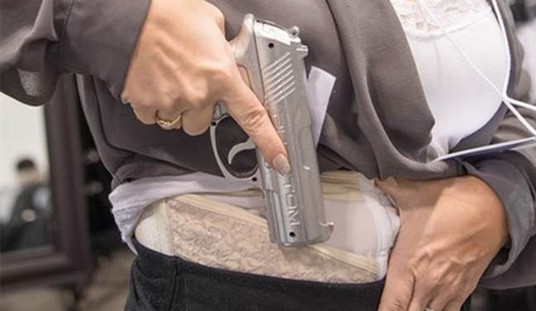Today’s handguns come in more shapes and sizes than a random assortment of Wal-Mart Thanksgiving sale shoppers. Not only that, many modern handguns come with replaceable grip panels so you can adjust the size to fit.
When deciding what’s best for you, comfort is a factor, but it’s not the definitive method of fitting a handgun. Just because one grip or another “feels good” doesn’t mean that you’ve got a proper fit. To be sure, you’ll want to check a couple of other things to help you decide which gun, or grip panel configuration, is right for you.
Trigger finger placement
Some experts will insist that you should press trigger with the pad of your index finger. Other equally credible experts insist that you should use the first joint in your index finger. Some of the difference in opinion stems from the anticipated “style” of shooting. Are you at a range doing slow and methodical shots? Or perhaps you plan to compete in bullseye target competition? Or you want to take up action shooting sports? Or maybe your interest is pure combat or self-defense. I don’t particularly care which trigger press placement you prefer. Settle on one, then let’s check to see if your guns grip size is too big or small.
With a very, very unloaded gun, assume a normal firing grip and point at a safe backstop. Now move your finger to the trigger as if you’re going to fire. Hold that position.
I want you to look at the lower portion of your index finger – the area from where it plugs into your palm up to the first joint. When your trigger finger is ready to press, do you see daylight between the gun and your finger?

If your finger looks something like the picture here, you’re good to go. If the bottom surface of your lower index finger is pressed against the side of the gun, you’re having to reach for the trigger. This means that your grip is too large for your hand size. That matters because as you flex your finger to press the trigger, your index finger will be contacting the side of your gun and gently encouraging it to move off target! The good news is that if you’re a lousy shot, you can blame the fit of your gun.
Alignment with your arm bone
This second test is a little less obvious. At the range, I see all sorts of shooters struggling with accuracy and ability to control recoil as a result of a crooked arm / gun relationship.
What does this mean? It’s simple. When you hold your gun in a firing grip, with your trigger finger placed to pass test one above, the gun barrel should be in perfect alignment with your “radi-ulni.” That’s short hand for the two bones in your forearm – the radius and ulna. You don’t just want the gun barrel to be parallel to these two bones, you want it to be a direct linear extension of these bones.
If your gun grip is too large for you, there will be a necessary tendency for you to grasp the gun so that the web of your hand wraps around towards the trigger, so your index finger can reach. This means that your thumb moves around and is directly behind the gun. Check out this picture to see an exaggerated view of what I mean.

With a properly fitted grip, you won’t need to reach around to get proper access to the trigger. Your natural alignment will look more like this.

Why is this so important? In the first photo, you can see that when the gun recoils, it’s going to press right against your thumb. There’s not much body mass in your thumb to control that recoiling gun – even if you’re all thumbs. You’ll really feel that recoil. More importantly, your gun will be likely to jump radically off target with each shot.
By aligning the bigger and heavier parts of your body directly behind the recoil impulse of the pistol, your body mass controls the recoil. Additionally, the gun benefits from your natural pointing direction. If you close your eyes and try to point your fist at something, you’ll notice that your arm bones end up pointed directly at your target. Why not make the gun a simple extension of that natural process?
So pick up your verified unloaded handgun and try these two tests. If you struggle with either, try a different gun. Or, if yours has an adjustable grip, try a different size.
Be sure to check out our latest book, The Rookie’s Guide to Guns and Shooting, Handgun Edition. It’s available in print and Kindle format at Amazon:








Join the conversation as a VIP Member